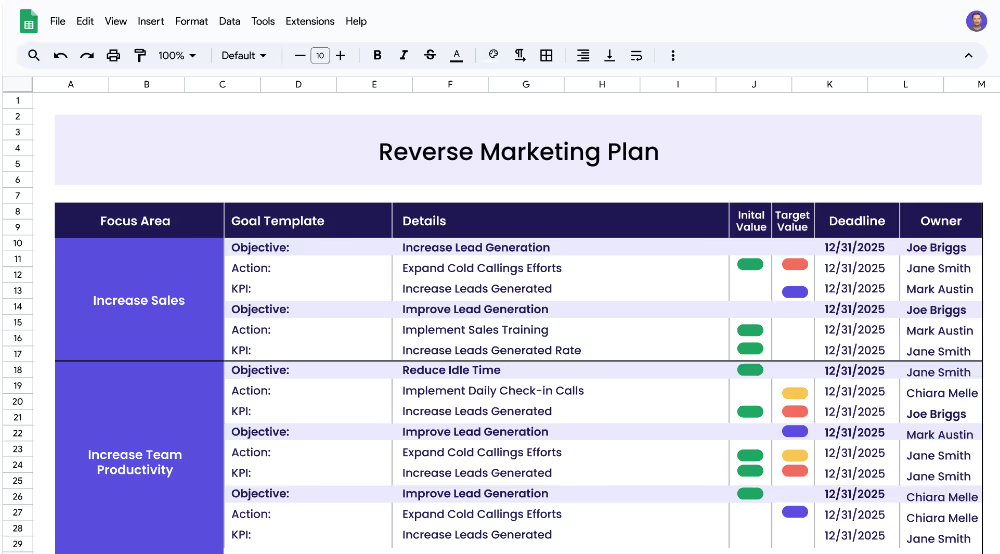A reverse marketing plan is a strategic approach that focuses on engaging customers and building brand loyalty. This plan takes a unique approach to marketing by utilizing tactics that are designed to create customer experiences that stand out from the competition. It involves looking at customer feedback, trends, and data to develop a plan that is tailored to a business’s needs and goals.
Each focus area has its own objectives, projects, and KPIs to ensure that the strategy is comprehensive and effective.
This reverse marketing plan template is designed to help businesses develop plans that will implement reverse marketing strategies. It is ideal for businesses that are looking to create unique experiences for their customers and build brand loyalty. This template will provide a step-by-step plan for creating a reverse marketing strategy that is tailored to an individual business.
When creating a reverse marketing plan, it is important to define clear focus areas. Focus areas are the main topics of the plan and will determine the objectives and actions that are created. Examples of focus areas might include increasing brand awareness, streamlining customer support, and building brand loyalty.
Once the focus areas have been determined, it is important to think of objectives that will help reach the goals of the plan. Objectives are specific goals that are created to reach the main focus area goals. Examples of objectives might include increasing customer engagement, creating unique experiences, and improving customer interaction.
KPIs (Key Performance Indicators) are measurable targets that are set to help track the progress of the objectives. KPIs should be specific and measurable, and they should be set at an achievable level. Examples of KPIs might include increasing loyalty program sign-ups, increasing event attendance, and increasing followers on social media.
Projects (or actions) are specific initiatives that are designed to help reach the objectives and KPIs. Projects should be related to the objectives and KPIs and should be realistic and achievable. Examples of projects might include developing a loyalty program, organizing events, and creating brand promotions.
If you’re ready to accelerate your strategy and see faster results, consider using Cascade Strategy Execution Software. Unlike spreadsheets, Cascade provides a streamlined platform designed to help you create, track, and execute your strategy with ease. Sign-up for free or book a demo with one of our strategy experts to get started today!


